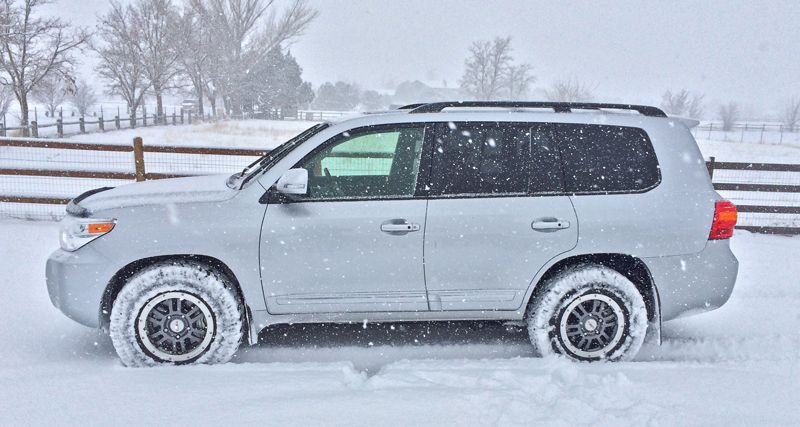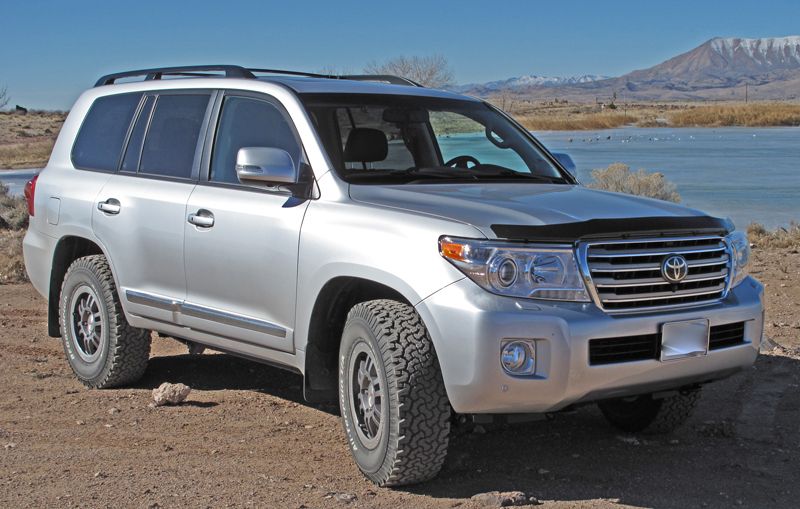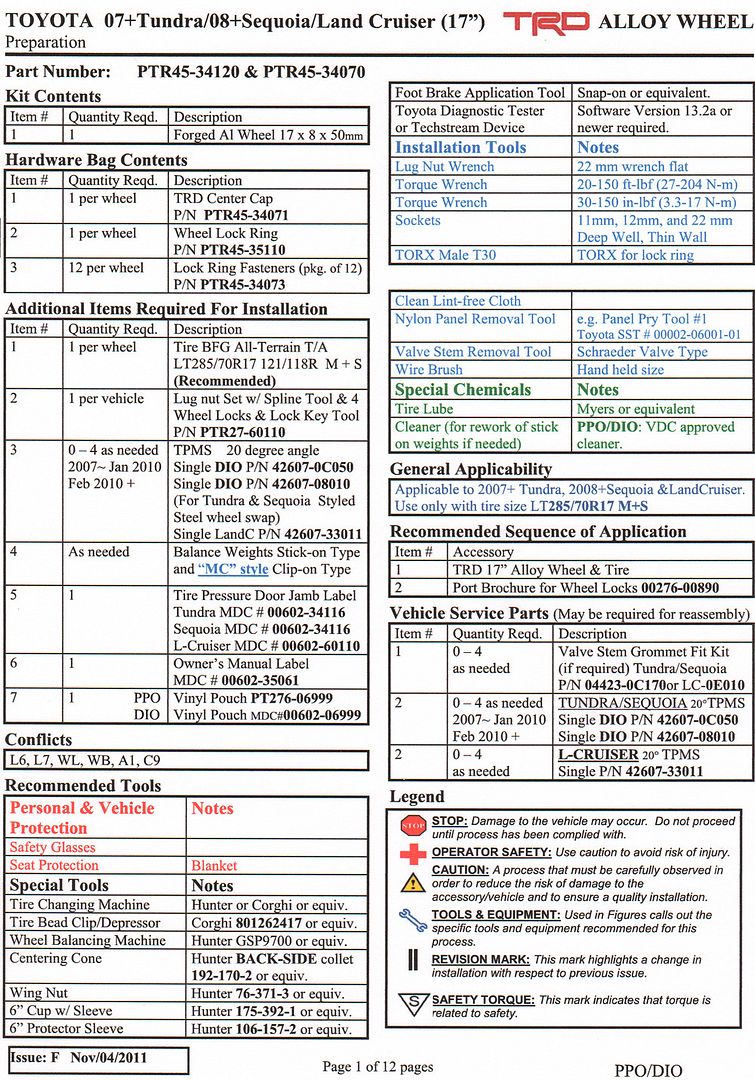Navigation
Install the app
How to install the app on iOS
Follow along with the video below to see how to install our site as a web app on your home screen.
Note: This feature may not be available in some browsers.
More options
Style variation
You are using an out of date browser. It may not display this or other websites correctly.
You should upgrade or use an alternative browser.
You should upgrade or use an alternative browser.
STOCK bfg ko2s, or other...
- Thread starter mooneywa
- Start date
This site may earn a commission from merchant affiliate
links, including eBay, Amazon, Skimlinks, and others.
More options
Who Replied?Markuson
SILVER Star
Yoda: I was just guessing 30 psi, maybe not that low... but plan on testing lower PSI values just to check.
When I drive on east coast it seems everyone drives faster than Chicagoans.
In California...when they got rid of the 55 limitation? Like MAGIC...every single highway speed sign changed OVER-NIGHT to 65. It was amazing. So... Now instead of everyone driving 65 in a 55...we drive 75 in a 65.
Even better...even Kalifirnistan has more remote portions of highway marked 70 & sometimes 75.
Driving through Arizona last few years...?
I was very happy to see signs of 80MPH. I think I might have seen an 85, but might be my mind playing trick own meh...
I have the 285/65R18s E-Rated KO2s on my stock 2016 wheels. I did not notice any difference in noise. (I am much more likely to notice wind noise - especially with my roof rack on.) As for mileage, again not enough to notice. I love the ride. I run them at 40 though I must admit that with the temps having (finally) dropped here in the Denver area the tires read 38 PSI first thing in the morning. (Temps in my garage at that time have been in the mid-30's.) I haven't bothered with adding a couple PSI because if it does snow I tend to want to have them a bit softer.
Yes, the 65's are about an inch more in diameter. This was not for looks (not important to me) but it does give me another half inch of lift while still having a comfortable fit. (When it becomes time to replace the shocks I will likely do a modest lift.)
I have not yet been able to test them in snow but the KO2s I had on my LR4 worked out great over the winter here in CO.
Yes, the 65's are about an inch more in diameter. This was not for looks (not important to me) but it does give me another half inch of lift while still having a comfortable fit. (When it becomes time to replace the shocks I will likely do a modest lift.)
I have not yet been able to test them in snow but the KO2s I had on my LR4 worked out great over the winter here in CO.
gaijin
GOLD Star
I have the 285/65R18s E-Rated KO2s on my stock 2016 wheels. I did not notice any difference in noise. (I am much more likely to notice wind noise - especially with my roof rack on.) As for mileage, again not enough to notice. I love the ride. I run them at 40 though I must admit that with the temps having (finally) dropped here in the Denver area the tires read 38 PSI first thing in the morning. (Temps in my garage at that time have been in the mid-30's.) I haven't bothered with adding a couple PSI because if it does snow I tend to want to have them a bit softer.
Yes, the 65's are about an inch more in diameter. This was not for looks (not important to me) but it does give me another half inch of lift while still having a comfortable fit. (When it becomes time to replace the shocks I will likely do a modest lift.)
I have not yet been able to test them in snow but the KO2s I had on my LR4 worked out great over the winter here in CO.
FYI, "The Book" says the correct cold tire inflation pressure for those LT285/65-18 tires is between 41-42psi - call it 42psi.
HTH
Oh. Yeah. Oops.  I need to bump them up anyway as I need to go pick up our trailer over the next week I with 700 lbs of tongue weight I would prefer to have at least the rears on the "high side" (42). So since I'll be getting the compressor out, I might as well set them all to 42. And that will definitely be "cold" tire inflation!
I need to bump them up anyway as I need to go pick up our trailer over the next week I with 700 lbs of tongue weight I would prefer to have at least the rears on the "high side" (42). So since I'll be getting the compressor out, I might as well set them all to 42. And that will definitely be "cold" tire inflation!
gaijin
GOLD Star
Yoda: I was just guessing 30 psi, maybe not that low... but plan on testing lower PSI values just to check.
When I drive on east coast it seems everyone drives faster than Chicagoans.
The lowest cold tire inflation pressure recommended for the LT285/70-17 tires under any circumstances, for any vehicle, by either the manufacturer or the Tire and Rim Association, is 35psi.
The lowest safe cold tire inflation pressure for use on the Land Cruiser is 40psi.
Obviously, purposely temporarily "airing down" for short term offroad use is not included in either of the two above.
For on road use, running less than 40psi on your rig opens you up to the possibility of tire failure and/or vehicle instability/rollover.
Again, obviously, I'm not saying your going to self-destruct if you run 38psi; but I am saying you would be operating outside the safe envelope of recommended tire pressures and increase your odds of misfortune.
You'll run whatever tire pressure you want, and that's up to you, of course. I'm just trying to let you know that there are engineers far more knowledgeable than both of us who have decided that on rigs like our Land Cruisers, anything lower than 40psi is not recommended - especially at high speeds.
HTH
Markuson
SILVER Star
@gaijinThe lowest cold tire inflation pressure recommended for the LT285/70-17 tires under any circumstances, for any vehicle, by either the manufacturer or the Tire and Rim Association, is 35psi.
The lowest safe cold tire inflation pressure for use on the Land Cruiser is 40psi.
Obviously, purposely temporarily "airing down" for short term offroad use is not included in either of the two above.
For on road use, running less than 40psi on your rig opens you up to the possibility of tire failure and/or vehicle instability/rollover.
Again, obviously, I'm not saying your going to self-destruct if you run 38psi; but I am saying you would be operating outside the safe envelope of recommended tire pressures and increase your odds of misfortune.
You'll run whatever tire pressure you want, and that's up to you, of course. I'm just trying to let you know that there are engineers far more knowledgeable than both of us who have decided that on rigs like our Land Cruisers, anything lower than 40psi is not recommended - especially at high speeds.
HTH
-I hereby dub you...
PSI-Jedi
Strong with the PSI-Force are you.

Last edited:
I have rw with 285/70/17, noticeable decrease in braking, acceleration and a small hit (1-2mpg) in fuel economy. If you are going load range e, I think a little more sidewall would soften the ride some. Stock size LT tires will require min 46 psi and would be a little rougher I'm guessing.
gaijin
GOLD Star
I have rw with 285/70/17, noticeable decrease in braking, acceleration and a small hit (1-2mpg) in fuel economy. If you are going load range e, I think a little more sidewall would soften the ride some. Stock size LT tires will require min 46 psi and would be a little rougher I'm guessing.
That would be an excellent guess! The recommended Cold Tire Inflation Pressure for stock size (LT285/60-18) tires is 46psi F/R. Same pressure for load ranges C, D or E.
HTH
So the PSI for the "60's" is 46 and the PSI for the "65's" is 42, right? I would have thought the taller tire (65) might need more than the "shorter". But then again, I have no real idea what I am talking about. So I ask the PSI-Jedi. 
gaijin
GOLD Star
View attachment 1359700 Are you running a lift with your RW rims, I picked these up today and would like to go to a 285 70 17 but am concerned it will look stupid because I do not have a lift.
No lift on mine, and the 285/70-17 tires look good to me:



And don't forget - Toyota recommends the 285/70-17 tire on the RW wheels for use on stock Land Cruisers:


HTH
Markuson
SILVER Star
View attachment 1359700 Are you running a lift with your RW rims, I picked these up today and would like to go to a 285 70 17 but am concerned it will look stupid because I do not have a lift.
It will look great both with or without a lift.
Here's my NO-LIFT, stock+RW photo vs. bare-bones-stock below:
It was the very first mod I did you my new-t-me 2008 200 a couple years ago.
Only difference is these are KO2's, but you already have far better tires than what came on mine stock. They'll look great.
By the way... They are "ROCK WARRIOR" in name only. Besides the name, they are just very nice-looking wheels.
You'll love 'em.
When you decide to get a new set of tires? -Highly recommend BFG KO2's with or without lift, and so does Toyota.
gaijin
GOLD Star
So the PSI for the "60's" is 46 and the PSI for the "65's" is 42, right? I would have thought the taller tire (65) might need more than the "shorter".
You are correct, sir.
LT285/60-18 = 46psi
LT285/65-18 = 42psi

Where are you guys getting these tire pressure recommendations from?
gaijin
GOLD Star
Where are you guys getting these tire pressure recommendations from?
From the Yearbook published by the Tire and Rim Association, Inc.: The Tire and Rim Association, Inc.
HTH
I don't understand why their figures are so much higher than Toyota's recommended tire pressure. The recommendation from Toyota for the OEM tires is 33 psi.From the Yearbook published by the Tire and Rim Association, Inc.: The Tire and Rim Association, Inc.
HTH
Totally different tires, Stock are P-metric, KO2's are LT tires, different construction and load requirements.
From what I could tell, LT tires need more PSI to carry the load.
From what I could tell, LT tires need more PSI to carry the load.
Totally different tires, Stock are P-metric, KO2's are LT tires, different construction and load requirements.
From what I could tell, LT tires need more PSI to carry the load.
Isn't that only required in order to get to the max payload rating? The K02 in 285/65-18 is rated at ~3000 lbs+ each. That's 12,000 lbs total, which is twice the weight of the Land Cruiser.
Similar threads
- Replies
- 3
- Views
- 299
Users who are viewing this thread
Total: 1 (members: 0, guests: 1)
